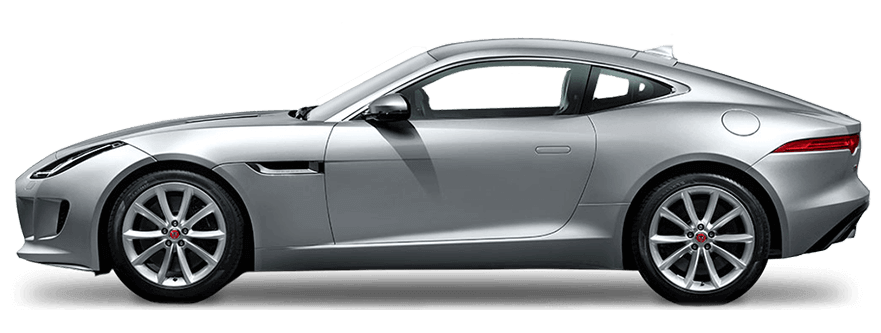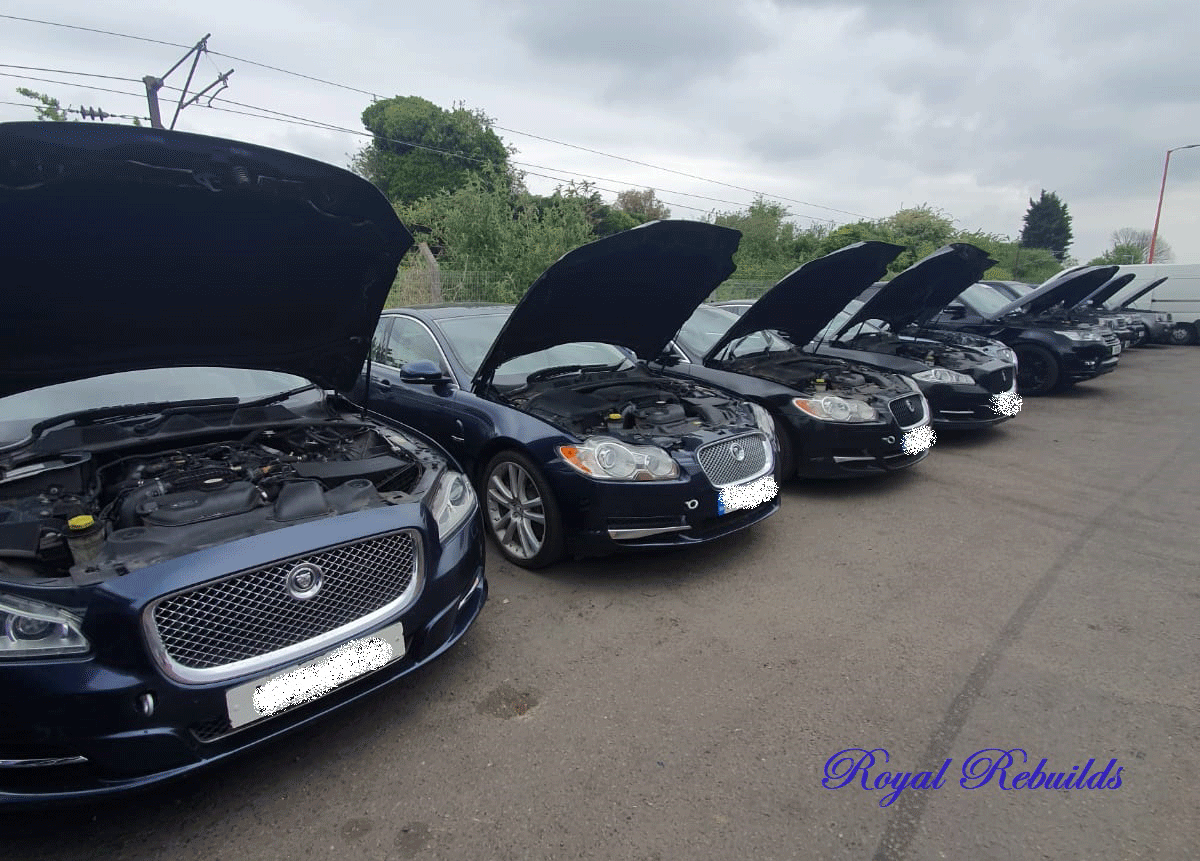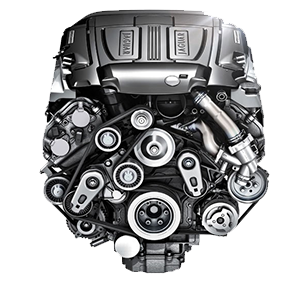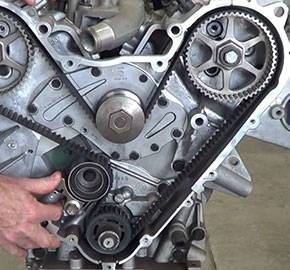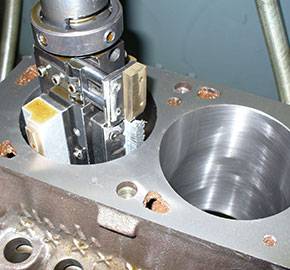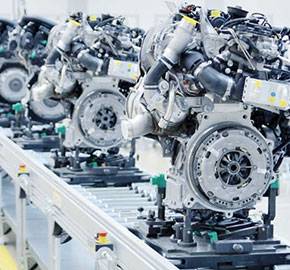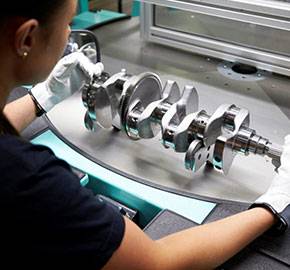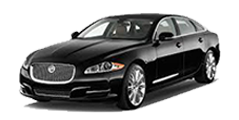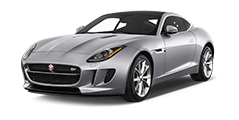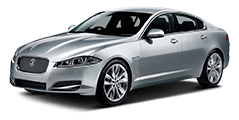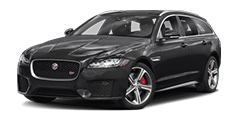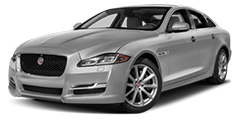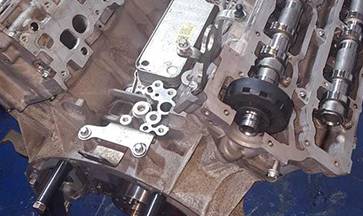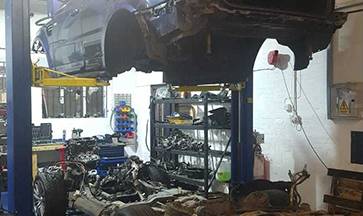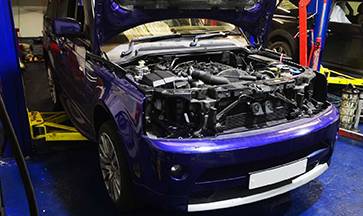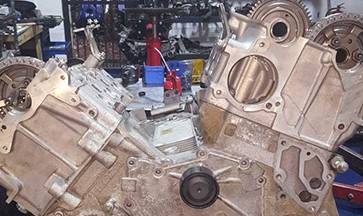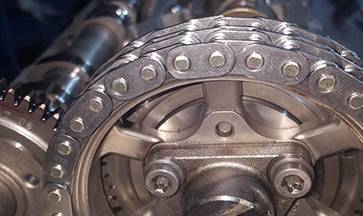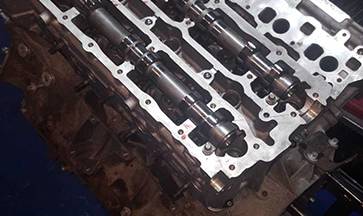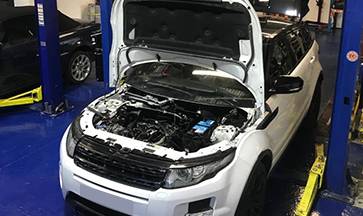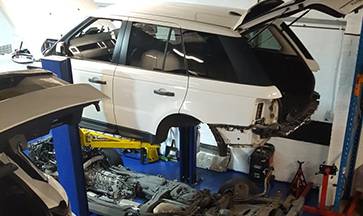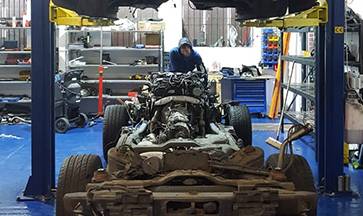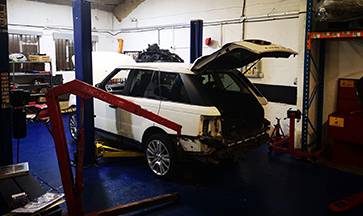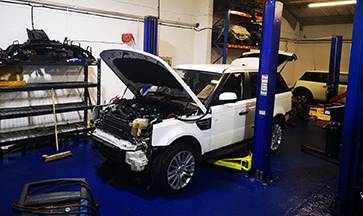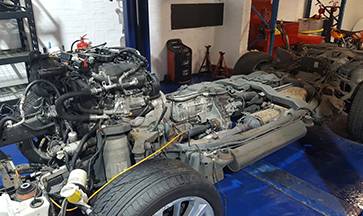Aerodynamics
The Jaguar XFR-S is the fastest sports saloon of the British company and rivals the BMW M5, Mercedes E63 AMG and Porsche Panamera. It is an amazingly aerodynamic car whose body was manufactured using computational fluid dynamics (CFD) which speaks for itself. Each and every part from the exterior to the weight, under tray to the cooling airflow, the shape of the exterior mirrors was enhanced using the same process. Plus, the higher and squarer tail is aerodynamically more efficient than a lower and rounded tail. In addition to that, it has improved airflow over the rear of the car thanks to its coupé-like roofline and elevated boot lid lip.
Chassis
The elementary structure of the XF has been borrowed from the S-Type with some upgrades such as stretched body to meet crash safety requirements, and elevated roof to offer added headroom while still staying in the "saloon within a coupé" proportions. Some features as suspension and mountings are similar to that used on the XK. Also, the engine line-up is identical to that equipped in the S-Type. A special underbody tray provides sound and vibration insulation. Additionally, a modified exhaust system and a double bulkhead between the engine bay and passenger compartment are also provided.
Engine Specifications
All the Jaguar XF models are automatic and are in accordance with the Euro 5. Next Green Car (NGC), which is a well-known organisation that examines vehicle emissions and rates them from 0 (cleanest) to 100 (dirtiest) accordingly, investigated the emissions from Jaguar's XF range. ADAC has also run Eco Tests and rated three of the diesel engines.
The 2.7-litre V6 diesel engine was substituted in 2009 with a new 3.0-litre V6 diesel engine. This engine is similar to the 3.0L TDV6 Jaguar XFR-S Discovery 4 engine mated with the ZF 8 speed automatic transmission. The AJ-V6D Gen III,[33] also came in two states of tune. The diesel engines installed in the XFs are products of the joint cooperation between Ford and Peugeot-Citroën.
Transmissions
The XF was initially launched with only one automatic gearbox. It was a six-speed ZF 6HP26 automatic transmission and was used in all models. However, in the 2010-2012 models, some engines such as 3.0 l diesel and 5.0 l supercharged petrol were coupled the second generation six-speed ZF 6HP28 transmission. Later in 2012-2013, 8-speed ZF 8HP70 transmissions took over the 6-speed gearboxes for all engines.
The gears can be selected in two ways, one by using a rotary dial that escalates from the centre console on the ignition, two by manual control using paddles behind the steering wheel. It is also equipped with AWD both in RHD and LHD markets although they vary according to consumers’ demands for engine types. The 2.0l diesel models which are a little smaller are also available in AWD in UK RHD.
Start End Model & transmission Engine Power Torque Top speed 0-60 mph (0–100 km/h) Economy Emissions
2012 – Jaguar XF 2.0 i4 Ti, 2.0 L, I4
241 PS 177 kW; 238 hp, 340 N⋅m 251 lb⋅ft, 150 mph 241 km/h, 7.9 s, 31.7 mpg imp 8.9 l/100 km, 207 g/km
2008-2011 - Jaguar XF 3.0 V6, 3.0-l V6
238 PS (175 kW; 235 hp) 293 N⋅m (216 lb⋅ft) 148 mph (238 km/h) 7.6 s (8.0 s) 26.9 mpg imp(10.5 l/100 km) 249 g/km
2012 – Jaguar XF 3.0 V6 SC
3.0 L, V6
340 PS (250 kW; 335 hp), 450 N•m (332 lb•ft) 155 mph (249 km/h) Limited 5.7 s (5.9 s) 30.0 mpg imp(9.4 l/100 km) 224 g/km
2008-2009 - Jaguar XF 4.2 V8. 4.2-l V8
300 PS (221 kW; 296 hp), 420 N⋅m (310 lb⋅ft) 155 mph (249 km/h) Limited 6.5 s (6.7 s) 25.5 mpg imp(11.1 l/100 km) 264 g/km
2008-2009 - Jaguar XF 4.2 V8 SC
4.2 L, V8
420 PS (309 kW; 414 hp), 560 N⋅m (413 lb⋅ft) 155 mph (249 km/h) Limited 5.2 s (5.4 s) 22.4 mpg imp(12.6 l/100 km) 299 g/km
2009-2012 - Jaguar XF 5.0 V8, 5.0-l V8
385 PS (283 kW; 380 hp), 515 N⋅m (380 lb⋅ft) 155 mph (249 km/h) Limited 5.4 s (5.7 s) 25.8 mpg imp(10.9 l/100 km) 254 g/km
2009 – Jaguar XF 5.0 V8 SC
5.0 L, V8
470 PS (346 kW; 464 hp) 575 N⋅m (424 lb⋅ft) 155 mph (249 km/h) Limited 4.9 s (5.2 s) 25.4 mpg imp(11.1 l/100 km) 264 g/km
2009 2015 Jaguar XF R 5.0 V8 SC
5.0 L, V8
510 PS (375 kW; 503 hp) 625 N⋅m (461 lb⋅ft) 155 mph (249 km/h) Limited 4.7 s (4.9 s) 24.4 mpg imp(11.6 l/100 km) 270 g/km
2012 2015 Jaguar XF RS 5.0 V8 SC
5.0 L, V8
550 PS (405 kW; 542 hp) 680 N⋅m (502 lb⋅ft) 186 mph (299 km/h) Limited 4.4 s (4.6 s) 24.4 mpg imp(11.6 l/100 km) 270 g/km
2011 2015 Jaguar XF 2.2 TDi4 163 2.2 L, I4
163 PS (120 kW; 161 hp) 400 N⋅m (295 lb⋅ft) 130 mph (209 km/h) 9.8 s (10.5 s) 55.4 mpg imp(5.10 l/100 km) 135 g/km
2011 2012 Jaguar XF 2.2 TDi4 190 2.2 L, I4
190 PS (140 kW; 187 hp) 450 N⋅m (332 lb⋅ft) 140 mph (225 km/h) 8.0 s (8.5 s) 52.3 mpg imp(5.40 l/100 km) 149 g/km
2012 2015 Jaguar XF 2.2 TDi4 200 2.2 L, I4
200 PS (147 kW; 197 hp) 450 N⋅m (332 lb⋅ft) 140 mph (225 km/h) 8.0 s (8.5 s) 52.0 mpg imp(5.43 l/100 km) 139 g/km
2008 2009 Jaguar XF 2.7 TDV6 204 2.7 L, V6
204 PS (150 kW; 201 hp) 435 N⋅m (321 lb⋅ft) 142 mph (229 km/h) 8.2 s (8.5 s) 37.7 mpg imp(7.49 l/100 km) 199 g/km
2010 2011 Jaguar XF 3.0 TDV6 211 3.0 L, V6
211 PS (155 kW; 208 hp) 450 N⋅m (332 lb⋅ft) 149 mph (240 km/h) 8.1 s (8.4 s) 41.5 mpg imp(6.81 l/100 km) 179 g/km
2009 2015 Jaguar XF 3.0 TDV6 240 3.0 L, V6
240 PS (177 kW; 237 hp) 500 N⋅m (369 lb⋅ft) 155 mph (249 km/h) Limited 6.7 s (7.1 s) 46.0 mpg imp(6.14 l/100 km) 159 g/km
2009 2015 Jaguar XF S 3.0 TDV6 275 3.0 L, V6
275 PS (202 kW; 271 hp) 600 N⋅m (443 lb⋅ft) 155 mph (249 km/h) Limited 5.9 s (6.4 s) 46.0 mpg imp(6.14 l/100 km) 159 g/km
Jaguar Speed Record
In November 2008, Paul Gentilozzi of Rocketsports drove a modified XFR and created a new Jaguar record by accelerating the car to a whopping 225.675 mph (363.189 km/h). The previous record for Jaguar was 217.1 mph (349.4 km/h) in an XJ220 and was made back in 1992. The modifications included some alterations to the stock vehicle such as low-mounted back spoiler, amplified power i.e. 510 PS (375 kW; 503 hp) using a remapped ECU, an improved air intake, enhanced exhaust system and brushed up supercharger settings.


